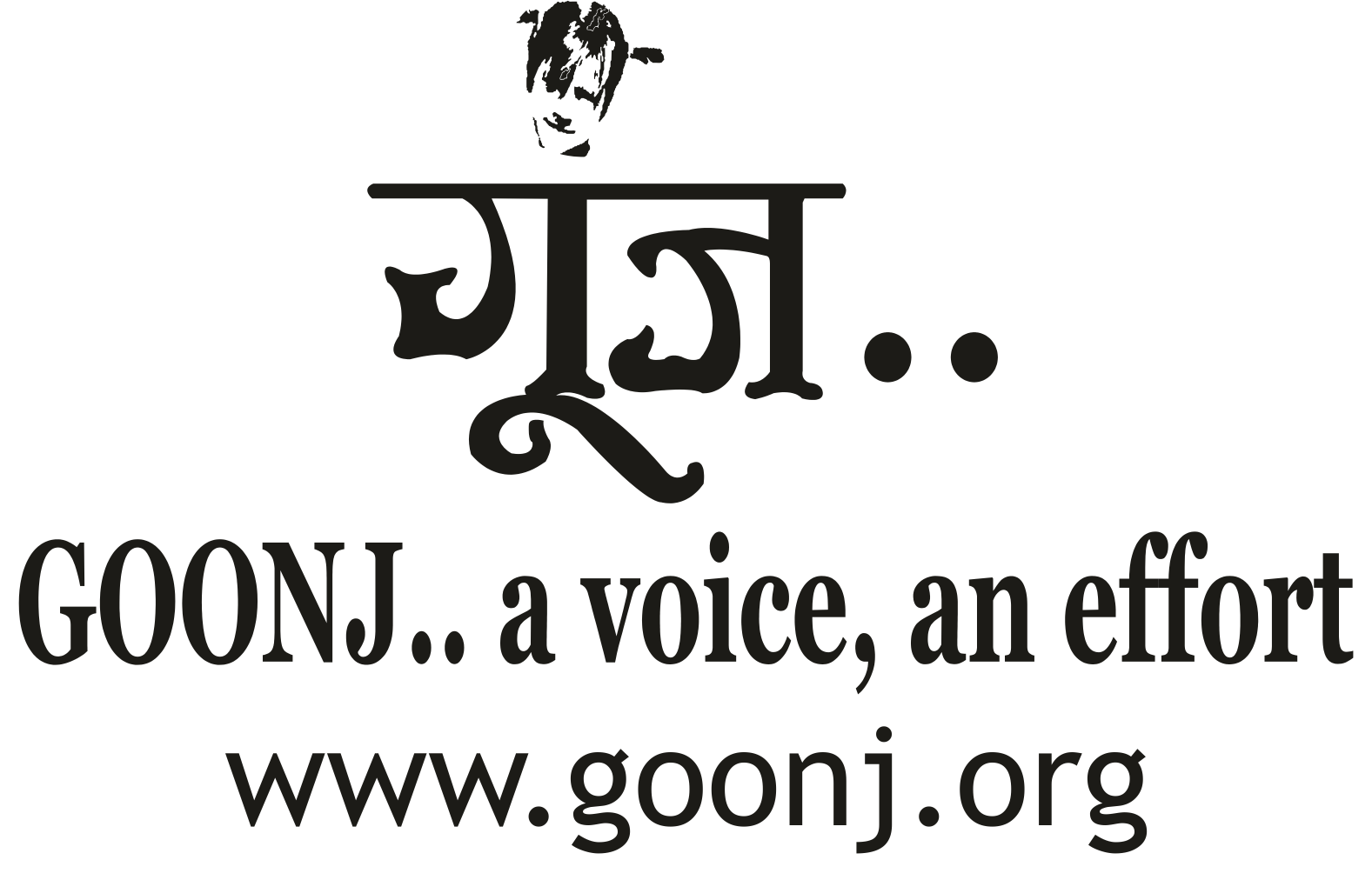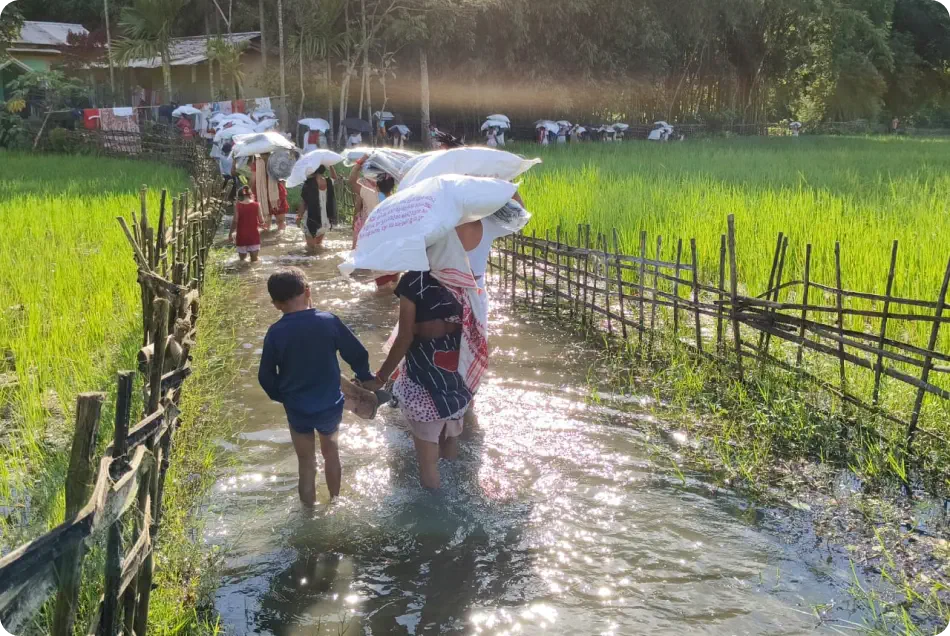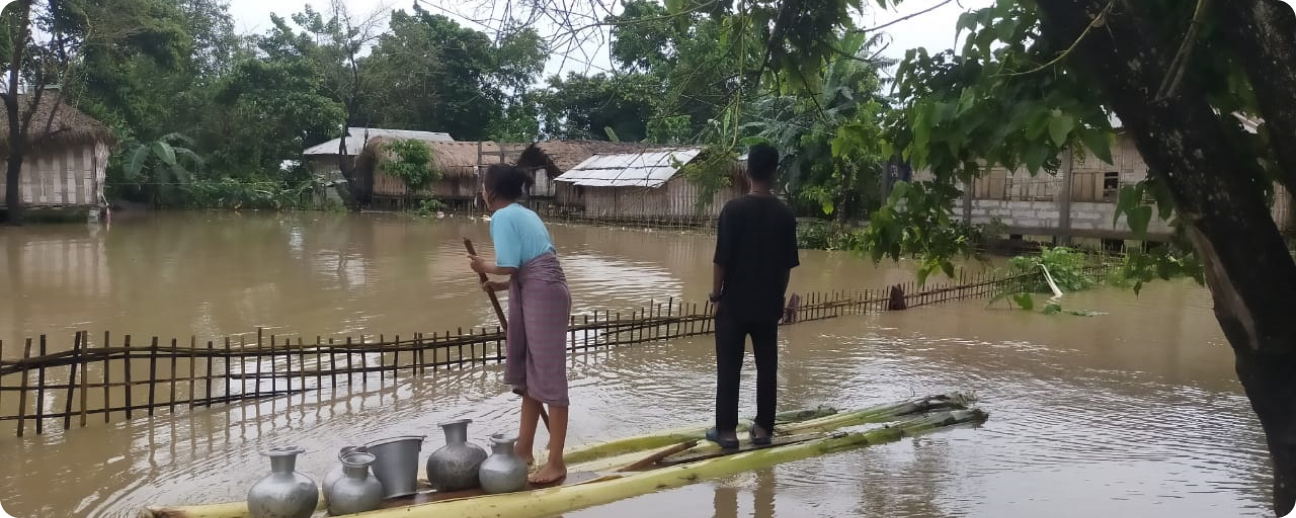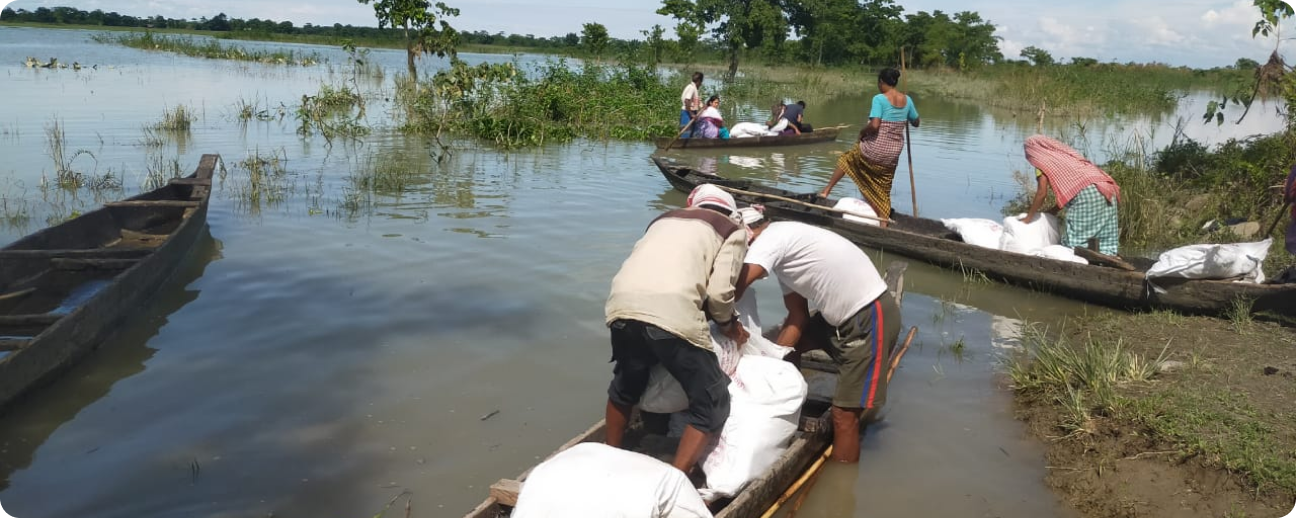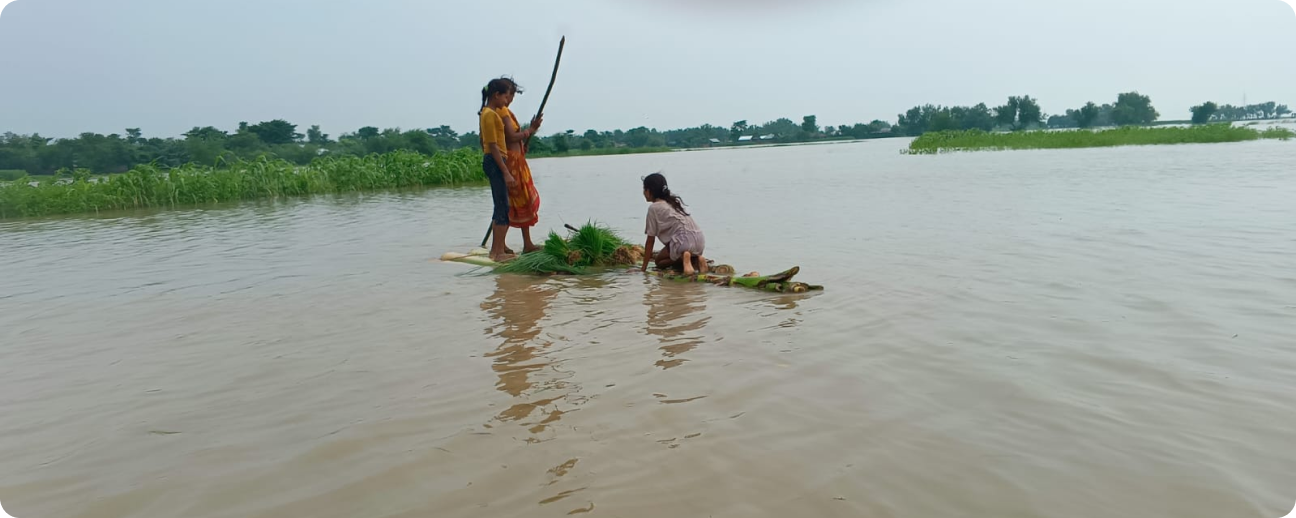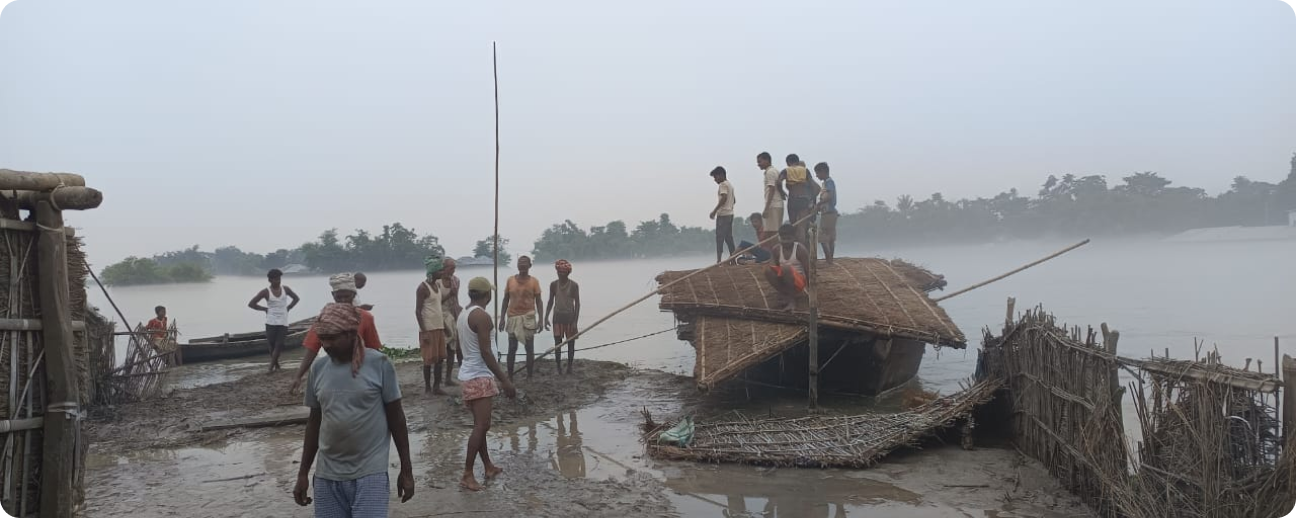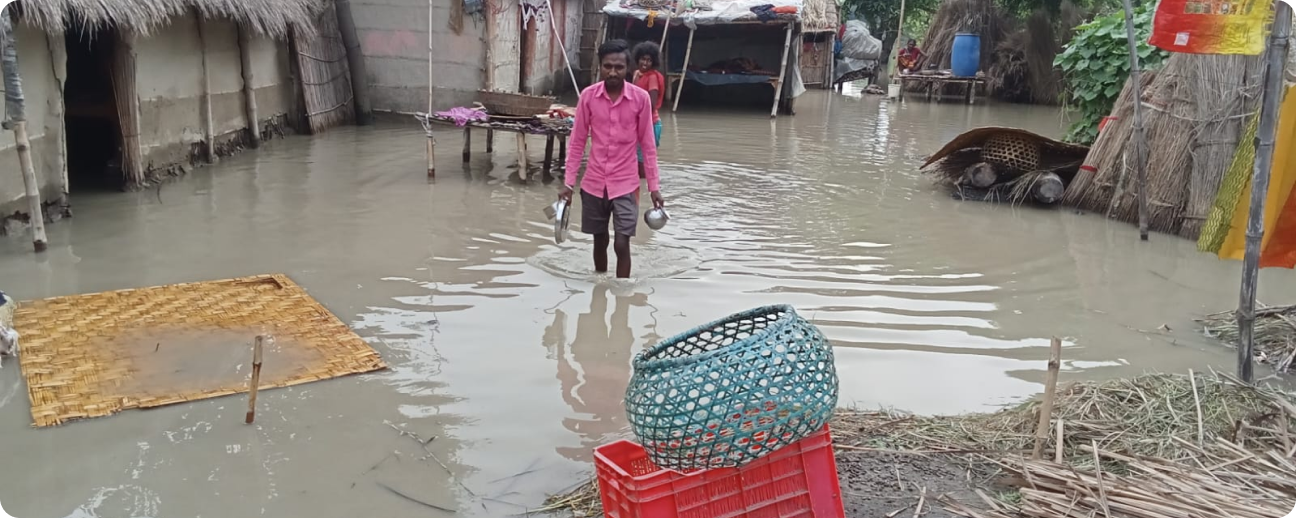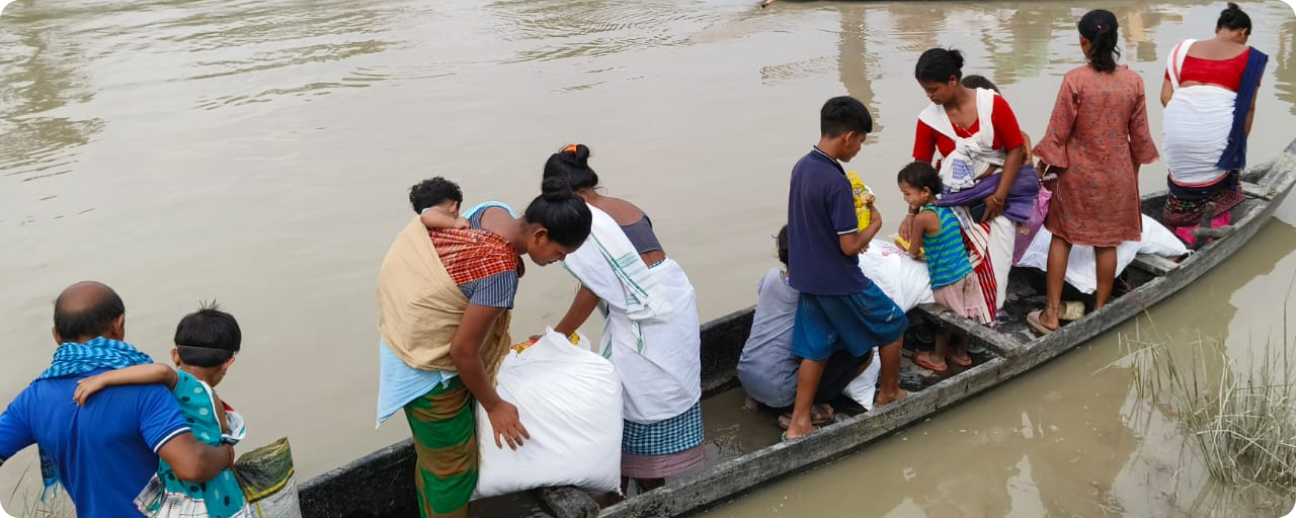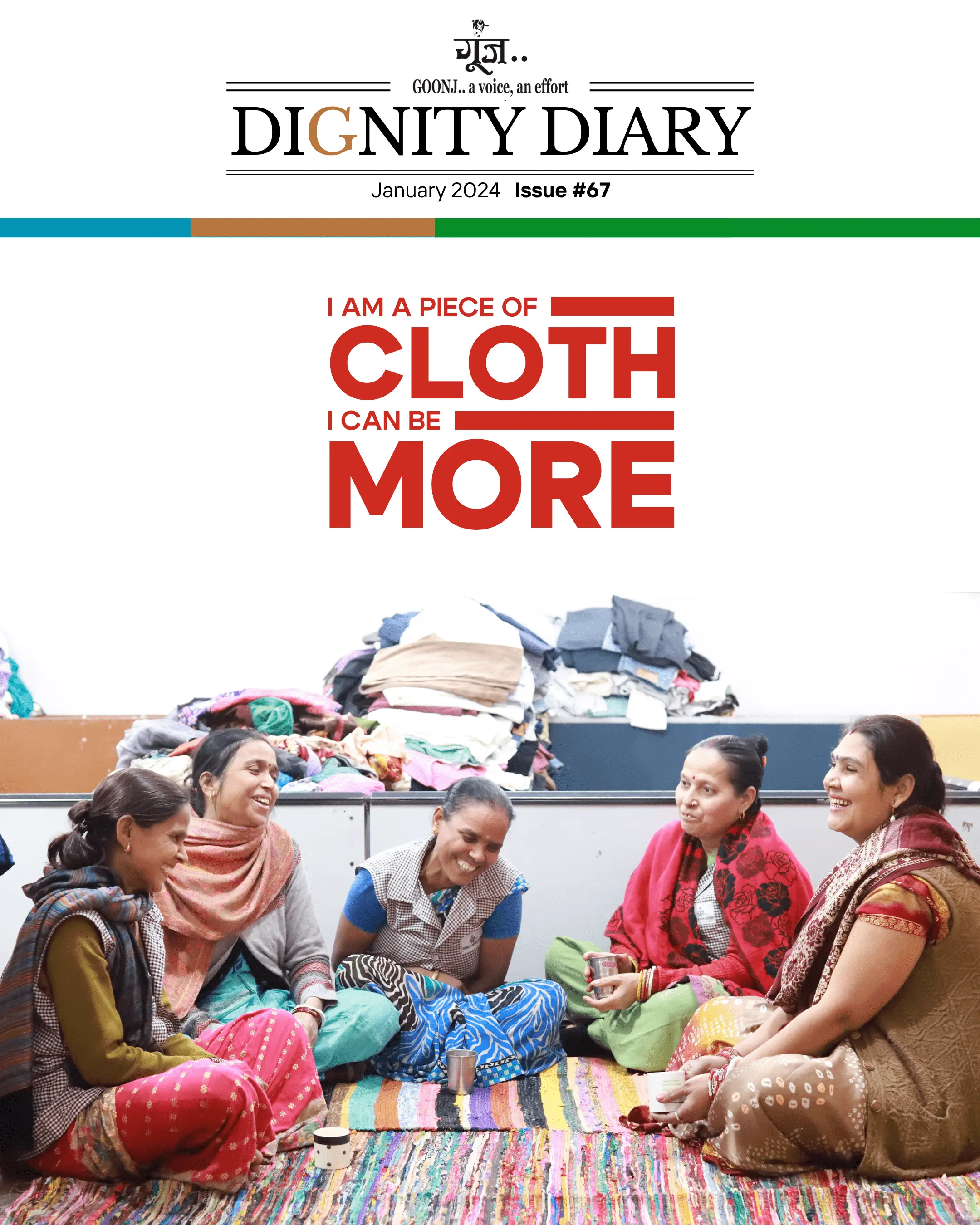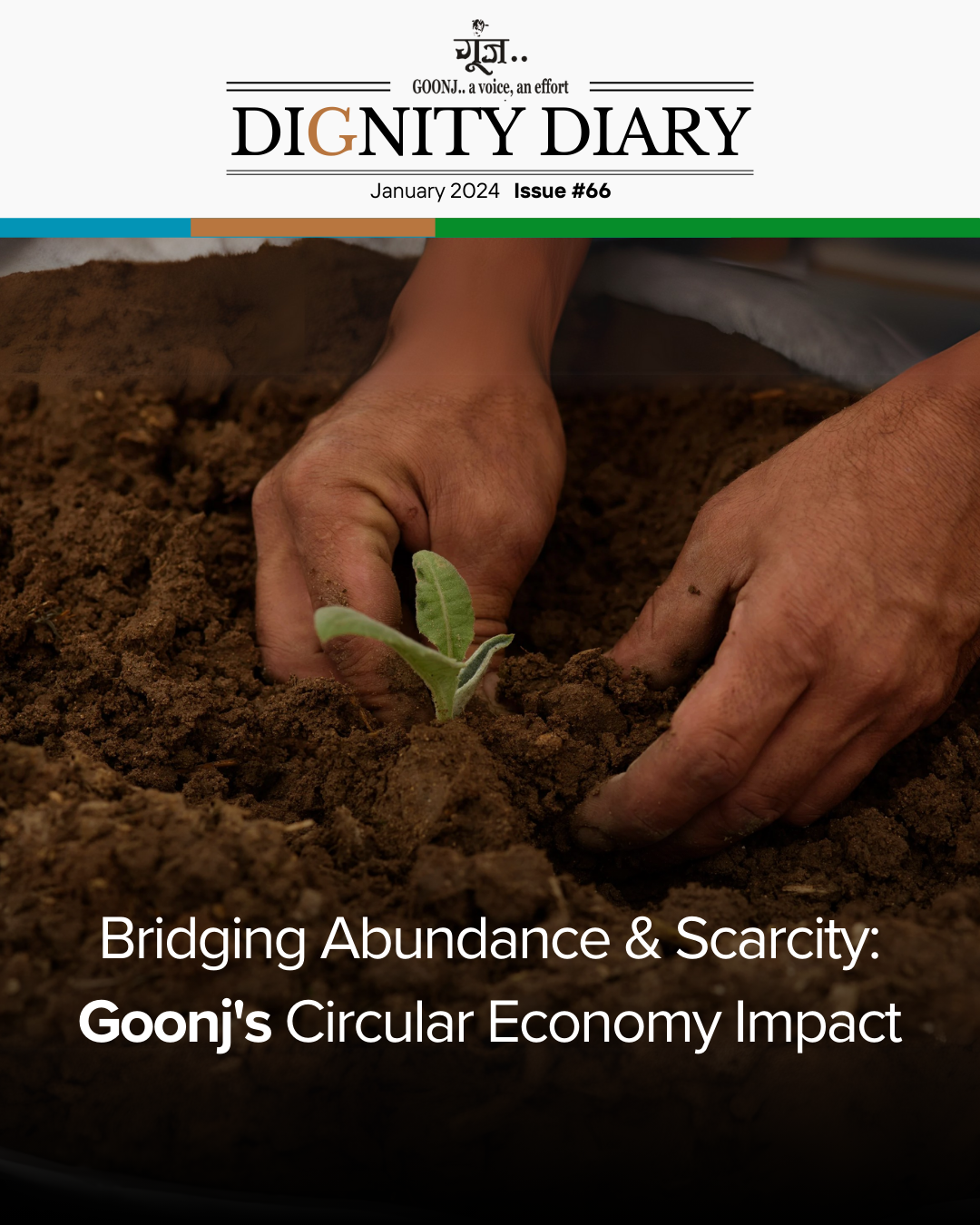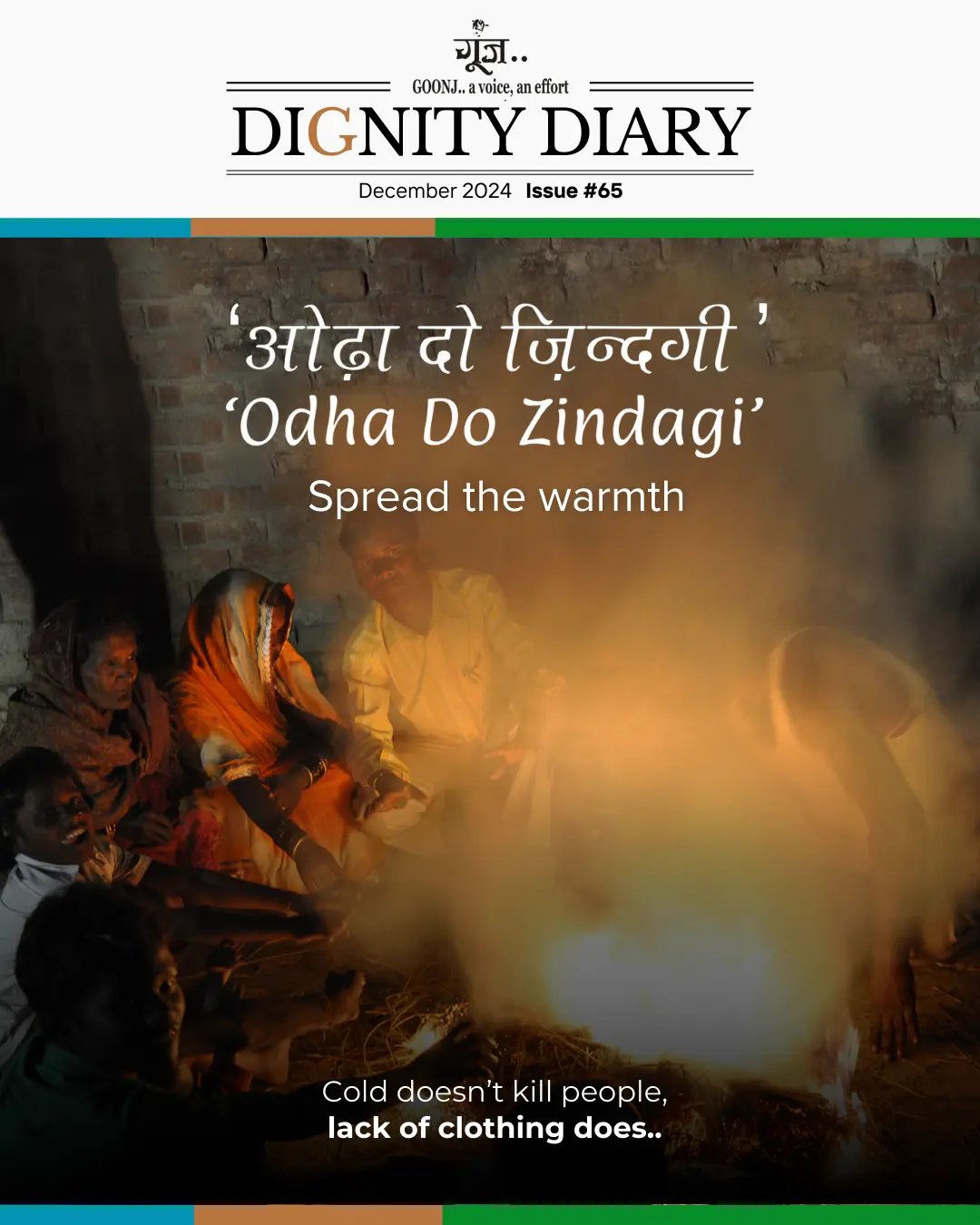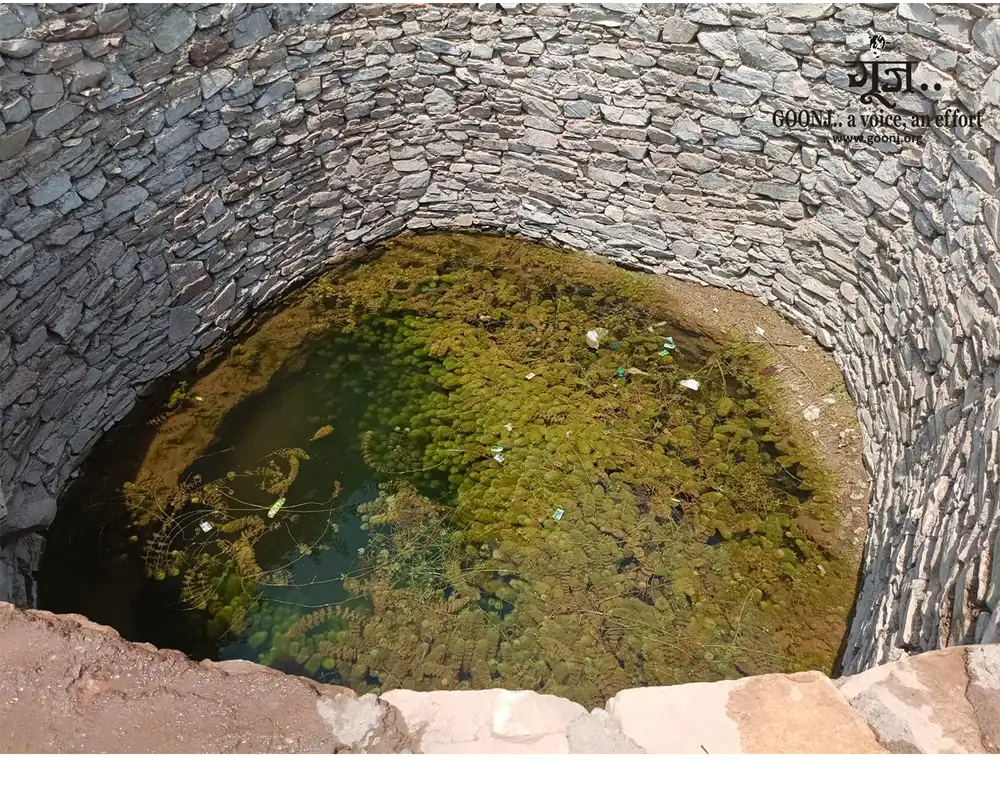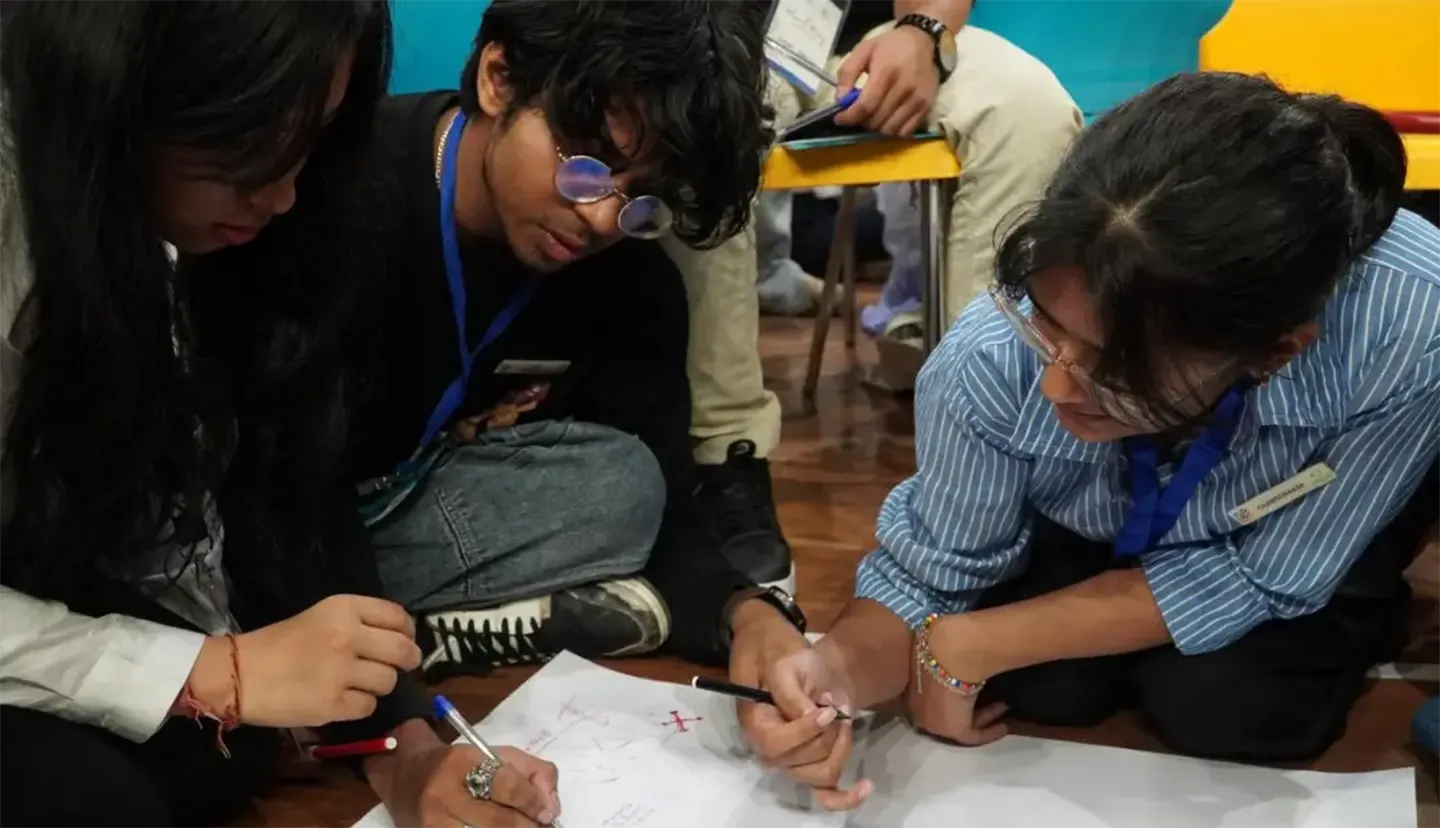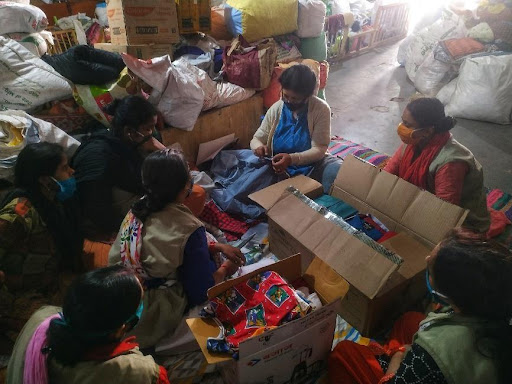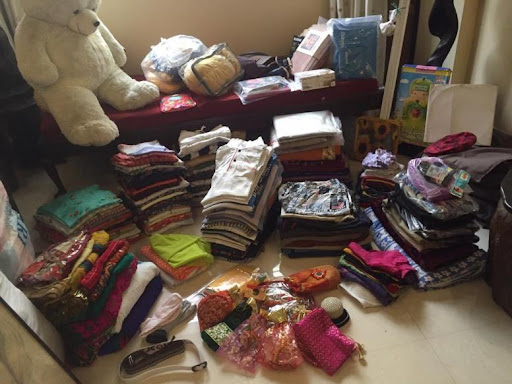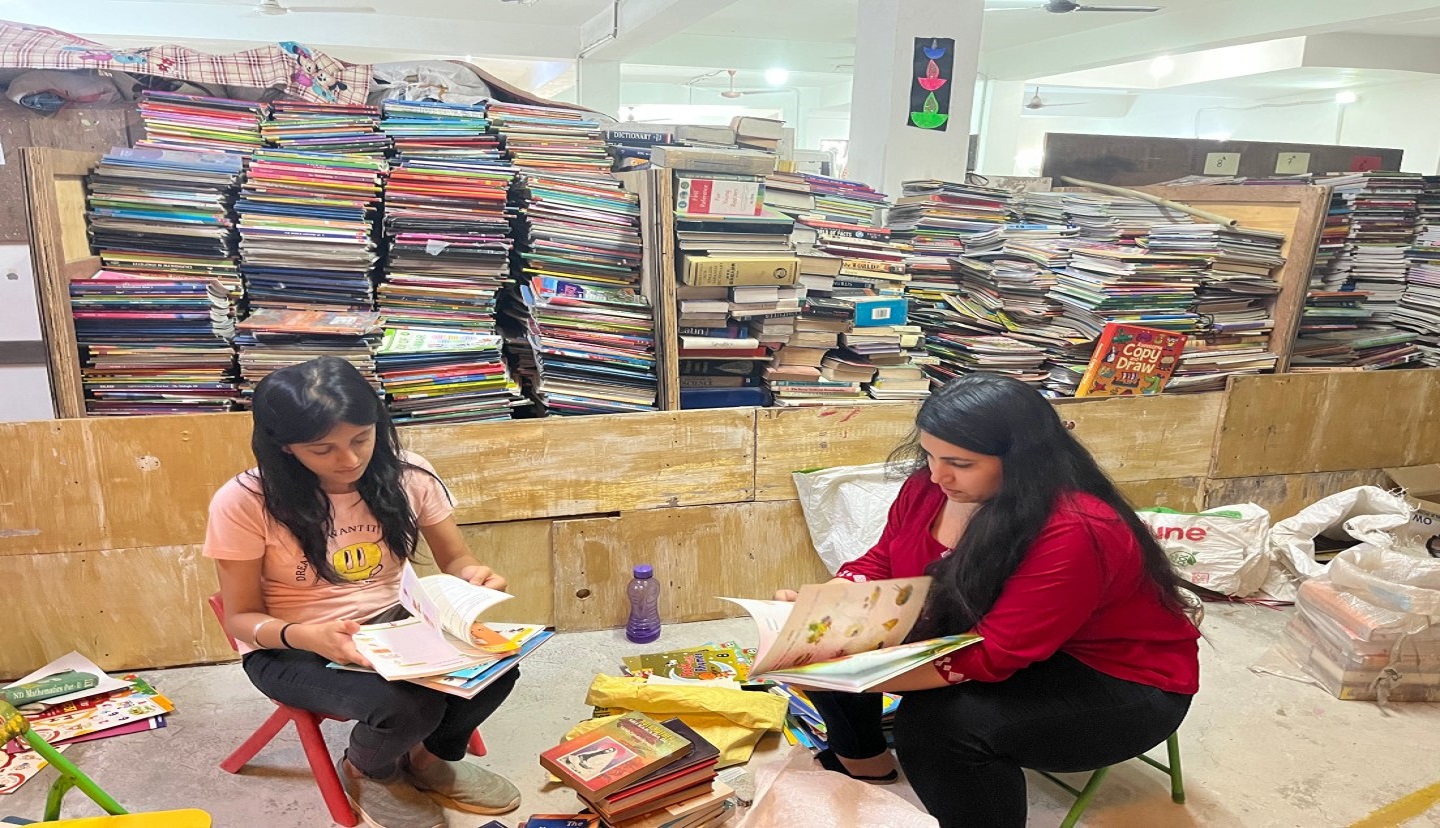In Nangda Pada, Banswara, Rajasthan, 57 villagers cleaned their only well under Goonj’s Cloth for Work initiative, restoring safe drinking water and building resilience through collective action.
Responding to Climate Emergencies
Climate emergencies—be it floods, heatwaves, cyclones, or droughts—are becoming more frequent, but their impact is not evenly felt. In rural India, these are not seasonal disruptions—they’re everyday disasters that interrupt work, education, health, and continuity.
Through our Disaster Rahat initiative and under the vision of SARRD (Societal Alliance for Resilience and Response to Disasters), Goonj responds with a blend of community-led action, sustainable material use, and a deep respect for local wisdom.
Our work is not about restoring what was lost—it’s about rebuilding with dignity and long-term resilience.
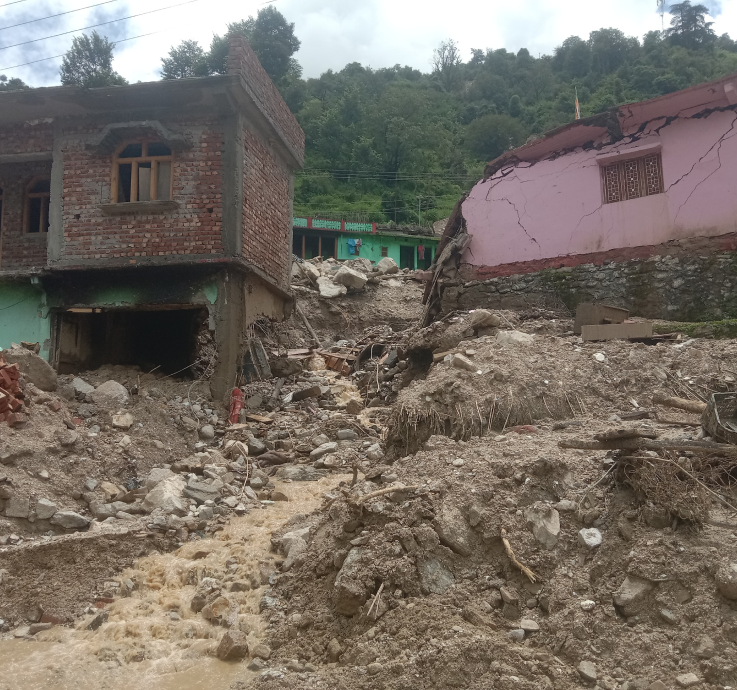
Our Approach to Climate Emergency
For over two decades, Goonj has responded to disasters with a focus on turning relief into a dignified exchange, where affected individuals actively contribute to and benefit from the recovery process.
The SARRD Lens on Disaster Response
Goonj’s disaster response framework is deeply rooted in a community-centered approach, where the focus is on empowering local communities to take the lead in disaster preparedness, response, and recovery. It emphasises the importance of local knowledge, resources, and participation, ensuring that solutions are not just top-down but are co-created with those directly affected. With diverse actors across geographies, the belief remains: responding to climate emergencies must be done with dignity, commitment, and collective attention.
We focus on the most vulnerable and marginalised communities, aiming to restore their dignity and self-respect. The framework emphasises addressing the underlying social and economic inequalities that make certain groups more susceptible to disasters. Our initiatives ensure that material support respects dignity and positions people as active participants. Inclusivity means involving all segments of society, ensuring equitable and timely access to resources.
Our approach goes beyond immediate relief and focuses on long-term resilience by integrating disaster response with ongoing development work. We view disasters as opportunities to address chronic issues like poverty, infrastructure deficits, and environmental degradation. The SARRD framework promotes sustainable commitments and practices across society to reduce future vulnerabilities.
While Goonj continues working deeply with grassroots communities, the SARRD alliance creates a shared space where institutions, individuals, and communities co-create solutions. From cities to villages, across sectors and skillsets—this conversational ecosystem strengthens our collective ability to respond and recover with purpose.
Our framework is adaptable, allowing for innovative solutions tailored to the specific needs and realities of different communities. It encourages creative problem-solving using local resources, fostering innovation at the grassroots. SARRD supports proactive, flexible, and precommitted responses that evolve with changing contexts—embracing new technologies and practices that build resilience.

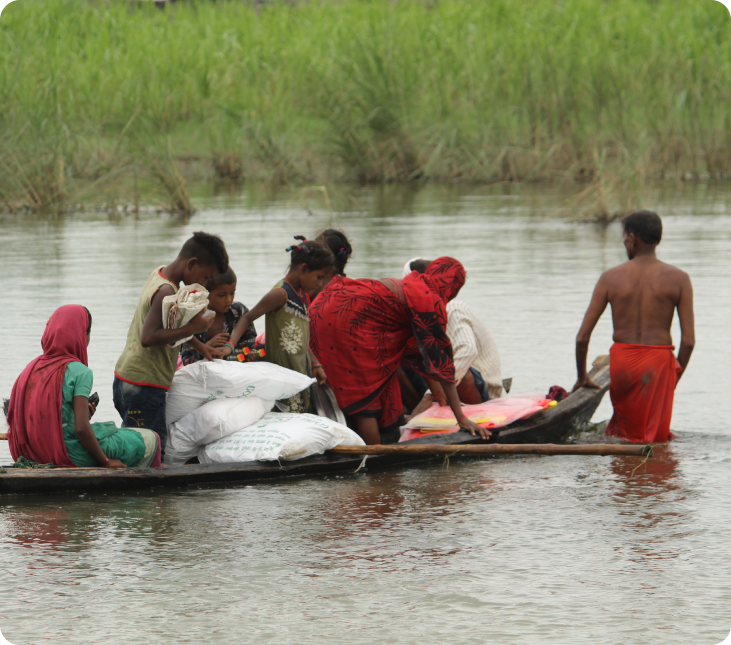
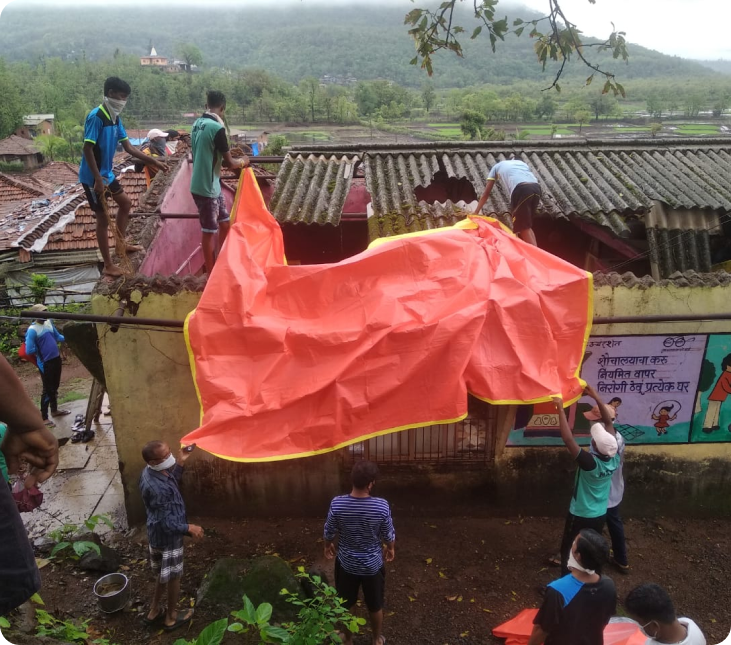
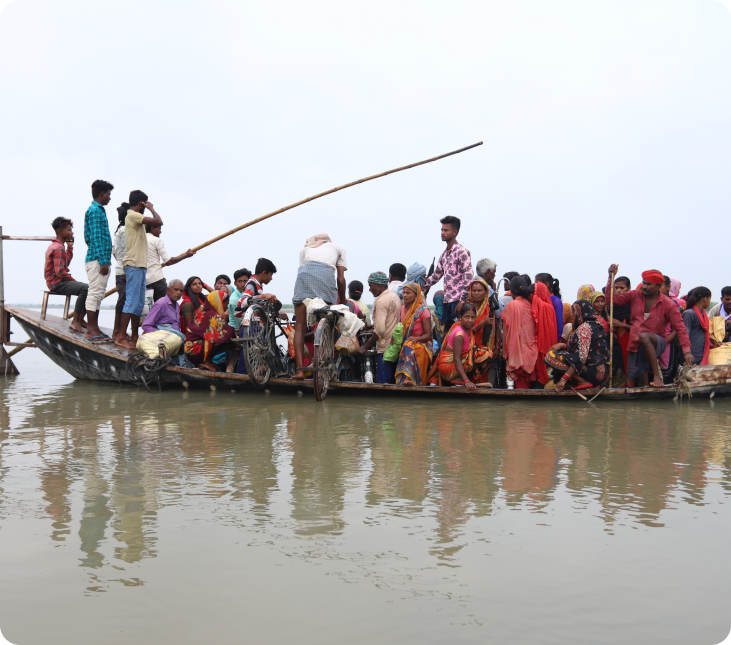
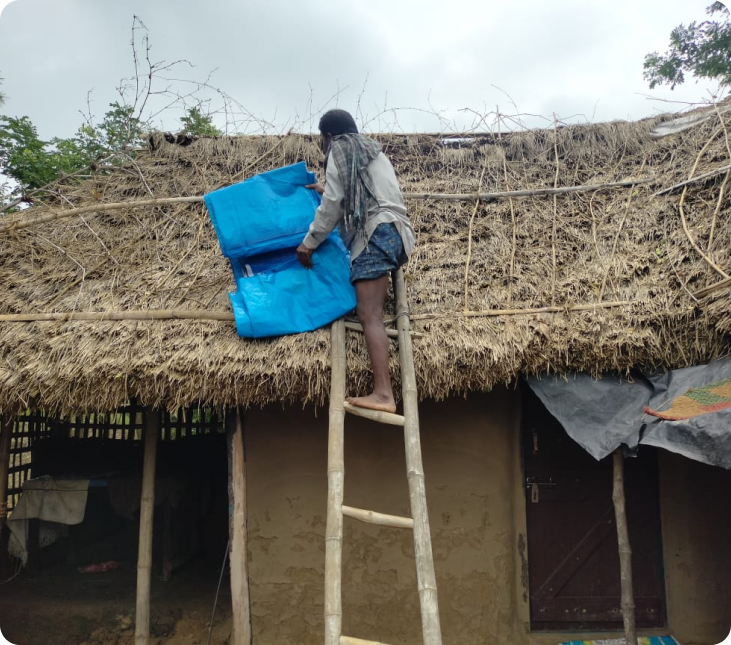
Transforming Climate Emergencies: SARRD Mitigation and Response Framework
Get Involved
Collaborate
Join the SARRD Alliance as a member. Introduce us to others who are a right fit
Email us at [email protected] and [email protected]
Commit
What you have – money, material, services, logistics, transportation, communication, etc for some familiar disasters like floods, cyclones, drought, fires, winters
Email us at [email protected] and [email protected]
To Know More
Our Work in Disasters
25 years of our Work
2024
Remal Cyclone Manipur, Floods in AP, Assam, Bihar, Karnataka, Telangana, Tripura, (Landslides) Kerala, (DANA Cyclone) in Odisha, (Fengal Cyclone) TN and Puducherry, (Unrest) Manipur
2023
Cloudburst and Flashflood in Himachal Pradesh, Uttarakhand, Floods in Delhi, Assam and Kerala, Gujarat (Cyclone Biparjoy)
2022
Floods in Andhra Pradesh, Assam, Delhi, Karnataka, Kerala, MP, Maharashtra, Rajasthan, Tamil Nadu, Telangana, Uttarakhand, Uttar Pradesh and West Bengal, Odisha (Cyclone Yaas)
2021
COVID-19, Tauktae Cyclone In Gujarat, Karnataka, Maharashtra, Tamil Nadu, and Floods in Assam, Bihar, Maharashtra, MP, Tamil Nadu
2020
COVID-19, Amphan Cyclone in West Bengal, Nisarga Cyclone in Maharashtra, Floods in Andhra Pradesh, Assam, Bihar, Chhattisgarh, Odisha and Telangana
2019
Fani Cyclone in Odisha Cyclone and Bulbul in West Bengal
2018
Northeast Floods, Kerala Floods, Titli, and Gaja Cyclones
2017
Floods in Assam, Bihar, Gujarat, Manipur, Odisha, Rajasthan, Uttarakhand, West Bengal
2016
Vardah Cyclone in Andhra Pradesh J & K and West Bengal Floods, Drought in Chhattisgarh, Drought in Chhattisgarh, Karnataka, MP, Maharashtra, and UP
2015
Cyclonic Storm and Earthquake in Bihar, Chennai Floods, Drought in Chattisgarh, Karnataka, MP , Maharashtra and UP
2014
Hudhud Cyclone in Andhra Pradesh J & K and West Bengal Floods, Drought in Chhattisgarh, Karnataka, Madhya Pradesh, Maharashtra, Uttar Pradesh
2013
Uttarakhand Floods, Muzaffarnagar Riots, Phailin Cyclone in Andhra Pradesh, Odisha and Drought in Chhattisgarh, Karnataka, MP, Maharashtra, and UP
2012
Assam floods
2011
Sikkim Earthquake and Odisha Floods
2009
Aila Cyclone, West Bengal and Odisha
2008
Kosi Floods, Bihar
2006
Assam, Bihar and West Bengal Floods
2004
Indian Ocean Earthquake and Tsunami
2002
Gujarat Riots
2001
Gujarat Earthquake
1999
Chamoli Earthquake and Odisha Super Cyclone
Dignity Diary
RAHAT STORIES FROM THE GROUND
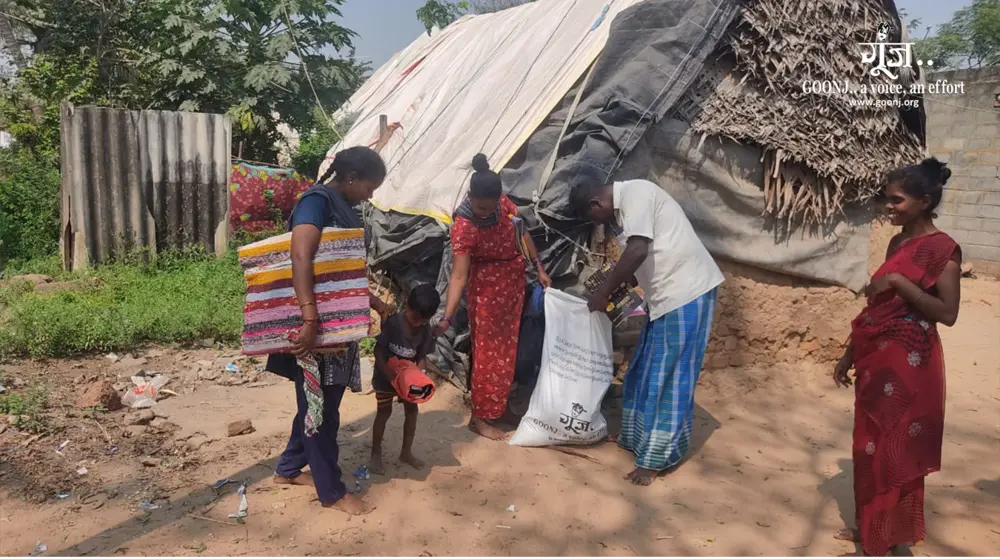
Learn how Goonj assists food, clothing, and essentials to tribal families in Ariyathurai, Thiruvallur district, after heavy rains damaged homes and disrupted livelihoods.
Relief and Resilience: Enabling Ariyathurai’s Tribal Community in Thiruvallur

Discover how Goonj’s flood relief in Majuli district, Assam, delivered essentials like sujnis and bedsheets, restoring dignity and hope to families affected by the Brahmaputra floods.
Restoring Dignity Amidst Floods: Relief in Jogi Gaon, Majuli
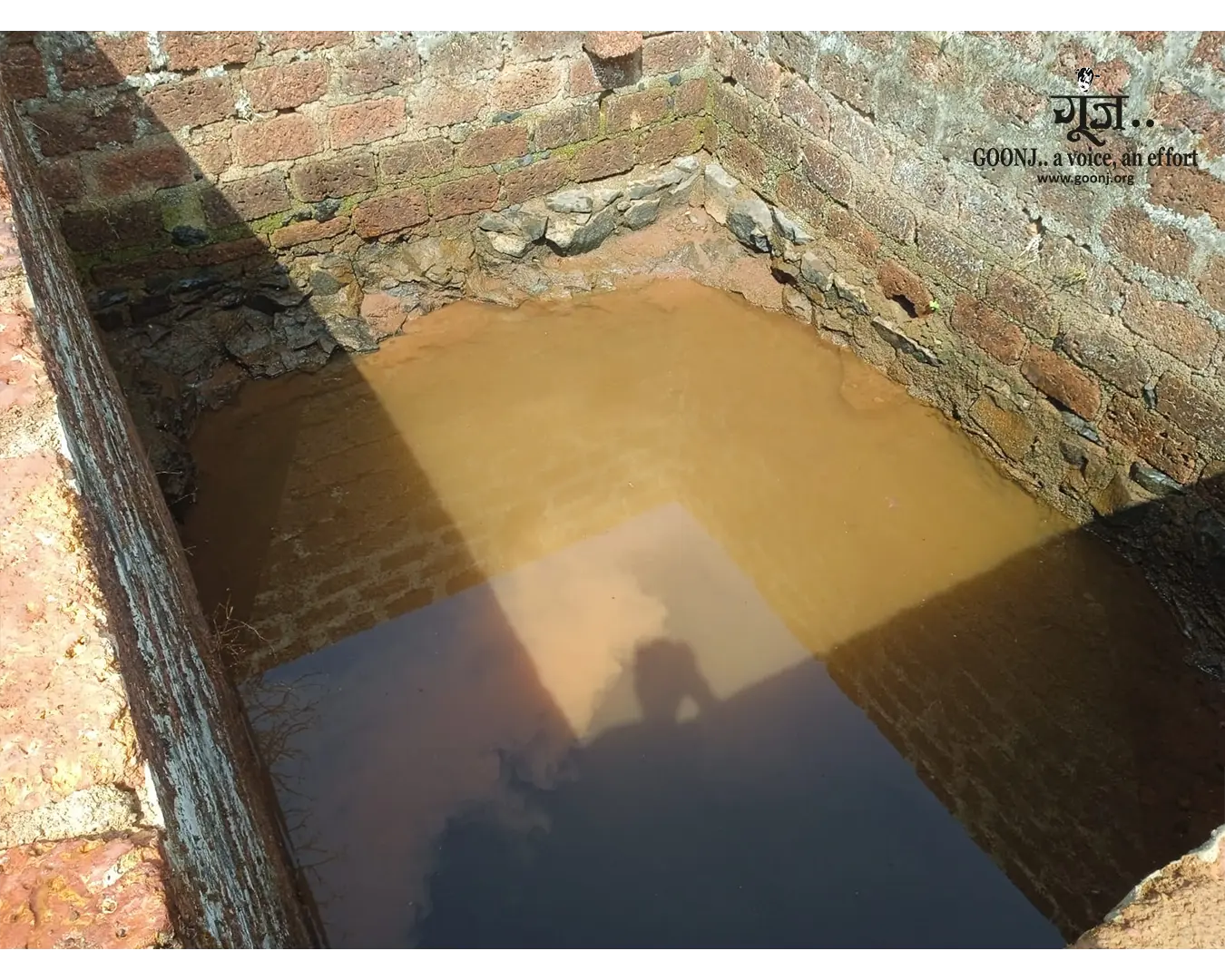
In Gharadi Bhuvadwadi, Ratnagiri, villagers cleaned their only well through Goonj’s Cloth for Work initiative, restoring access to clean drinking water with collective effort and shramdaan.
